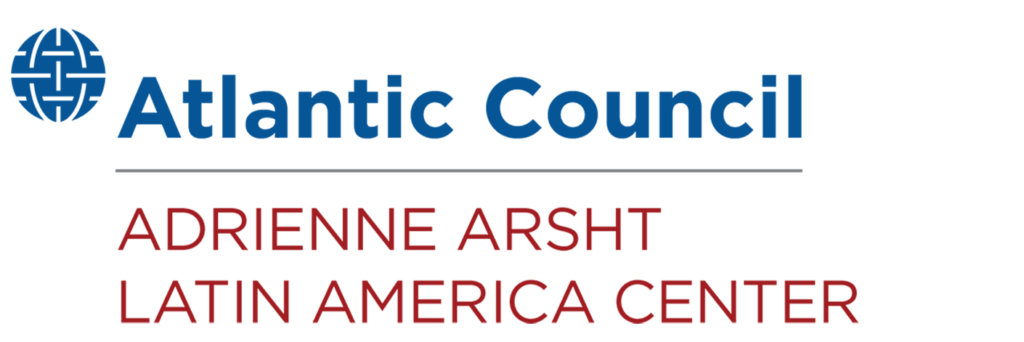Ensure a whole-of-government approach
I WAS FIRST EXPOSED TO the whole-of-government approach to securing long-term peace in Colombia, formerly called “consolidation” or “integrated action”—and more recently known as “stabilization”— during a 2008 trip to Cartagena with Admiral James Stavridis, former commander of US Southern Command. It has continued to shape my thinking, including during my time as deputy assistant secretary of defense for West-
ern Hemisphere Affairs (2013-2016).
The logic behind stabilization is simple and makes sense, but the approach requires tremendous resources and political will. Although the armed forces are critical to the physical recovery of territory, they cannot guarantee lasting peace. After the military secures an area, civilian agencies must follow through with basic services like building and staffing schools and hospitals, improving infrastructure, stimulating economic development, and enhancing the rule of law. As Colombia seeks to implement the 2016 peace accord, the complete execution of this strategy is more urgent than ever.
As a former US Department of Defense official, I can say with certainty that no matter how capable the armed forces are, Colombia will not be able to leave the cycle of violence behind without the robust presence of non-military agencies in remote areas. Although the Colombian government has tasked soldiers with leading development efforts in much of the country, militarization is not the solution. It will take the sustained action of civilian ministries to prove that renewed state presence in rural areas is beneficial and permanent.
Decades of state absence in rural regions has become one of Colombia’s most significant modern-day challenges. Civil rule quickly eroded in the 1960s after guerrilla groups like the Revolutionary Armed Forces of Colombia (FARC) took up arms against the Colombian government and established operations in remote areas. Rural Colombian residents were forced to abandon their land, while those who remained faced widespread violence and injustice. Over the next decades, state absence in many rural areas created growing space for the illegal drug trade, exacerbated widespread violence, and led to a greater consolidation of guerrilla powers.
In the post-COVID-19 era, addressing historical governance, security, and state presence deficiencies is critical. Despite an initial reduction in violence after signing the peace accord, new forms of conflict-related violence have increased at alarming rates, particularly against social leaders and human rights defenders.1World Report 2022, Human Rights Watch, March 08, 2022, https://www.hrw.org/world-report/2022/country-chapters/colombia#. Now is the time for Colombia to double down on the whole-of-government approach and for the United States to commit to supporting its partner. While observers point to Plan Colombia as a success, we risk jeopardizing sustainable peace and stability in the region with- out first acknowledging its gaps and our plans to fill them. We’ve seen the results of successful security cooperation, and there is no reason for stabilization to fail if it is prioritized and properly funded.
A brief history of stabilization
Colombia and the United States have long recognized the critical role of non-military actors in long-term peace-building. In fact, the United States has supported Colombia’s whole-of-government approach since its inception, following the creation of the Centro de Coordinación de Acción Integral (CCAI) in 2007. The first CCAI conference I attended during my 2008 visit to Cartagena left me full of hope for Colombia’s future. Both the Colombian and US participants demonstrated a commitment to an interagency strategy. Given that President Juan Manuel Santos, then-Defense Minister, was one of CCAI’s leading advocates, I wasn’t too worried about the fact that the military outnumbered the civilian attendees. I was optimistic about increased civilian participation in the effort due to the active participation of President Álvaro Uribe and non-military agencies, including the Ministry of Agriculture and the US Agency for International Development (USAID), which suggested that stabilization would truly be an interagency endeavor, living up to the “integrated action” label.
CCAI’s first foray into social recovery and integrated action was in the Macarena region, a coca production hotbed under FARC control that I visited during my first months as deputy assistant secretary of defense. I could see why Macarena had become a recipient of US assistance. The Colombian Army Commander, who coordinated and led the visit, had reason to be proud. I found it remarkable that the armed forces had secured the area after it had been a FARC stronghold for decades without any real state presence. Unfortunately, a robust civilian surge did not follow the armed forces into the Macarena region. Soldiers, not civilians, were leading development projects and interacting with the local population. Today, fifteen years after the creation of CCAI and despite the government’s best intentions, work remains in pursuit of this critical mission.
In the years since the creation of CCAI, the Colombian government introduced the Territorially Focused Development Program (PDETs in Spanish) to implement the Comprehensive Rural Reform chapter under the 2016 peace accord. PDETs cover 36 percent of Colombia’s territory and stand at the center of the government’s strategy for the comprehensive development of the 170 municipalities most affected by conflict, the absence or weakness of the state, and illicit activities.
The US government provides significant support to this approach, particularly though USAID. The agency’s Country Development Strategy for Colombia prioritizes PDET municipalities, estimating that approximately 75 percent of aid will be directed to these areas through 2025.2Peace, Stability, & Prosperity: Country Development Cooperation Strategy July 17, 2020 – July 17, 2025, US Agency for International Development, July 2020, https://www.usaid.gov/sites/default/files/ documents/Colombia_CDCS_Narrative_Public-Oc7-2020.pdf. The PDETs have also attracted investment from US philanthropists and donors such as Howard Buffett. Still, they remain largely under-resourced. Further US-Colombia cooperation to enhance transportation, healthcare, education, and economic development in PDETs will be critical for their success and fulfilling the peace accords’ promise of ending Colombia’s cycles of violence.
The way forward
Social recovery is possible. Although program names have changed, Colombia’s leadership continues to advocate for stabilization as the main strategy to mitigate violence, strengthen state presence, and consolidate peace.
This whole-of-government approach should continue to inform US assistance to Colombia, which has increased 152 percent since 2016.3As of 2020, the latest complete dataset available. US Agency for International Development, “US Foreign Assistance by Country: Colombia,” ForeignAssistance.gov, accessed March 15, 2022, https://foreignassistance.gov/cd/colombia/2020/obligations/0. More specifically, aid geared toward governance has more than doubled to $410 million since the signing of the peace accord, with a greater focus on civil society, economic development, and peacebuilding than in-country narcotics control and traditional security cooperation.4“Colombia Aid,” Google spreadsheet, accessed March 1, 2022, https://docs.google. com/spreadsheets/d/1P8IEn5b4XlUOD0xYatu3SH1L6jgNPuY0QDggAiDWqF0/ edit#gid=1299308071. However, the multidimensional Venezuelan refugee crisis, coupled with the lingering socioeconomic effects caused by COVID-19, has left Colombia in a precarious fiscal situation. The country has been generous in accepting nearly two million Venezuelan migrants, granting them access to employment, education, health- care, and other social services, and offering a ten-year temporary protected status. Recommitting to support Colombia as it absorbs this population is more critical than ever.
Future US stabilization resources should build on more than two decades of strategic US-Colombia partnership for social recovery. The administration of President Barack Obama supported CCAI through its Colombia Strategic Development Initiative, and the Biden administration remains a key partner of the Colombian government and could do even more in implementing the PDETs. For instance, PDET zones in Catatumbo that specialize in producing cacao, papaya, and palm oil, directly benefiting more than 20,000 agricultural families, would benefit from greater attention from the international donor community.5Jorge Andrés Ríos Tangua, “Catatumbo, una gran despensa agrícola por aprovechar,” La Opinión, May 2, 2018, https://www.laopinion.com.co/economia/catatumbo-una-gran- despensa-agricola-por-aprovechar.
To inform future assistance, subsequent US administrations should look at the 2018 Framework for US Stabilization developed by the US Department of State, US Department of Defense, and USAID.6US Department of State, Stabilization Assistance Review: A Framework for Maximizing the Effectiveness of U.S. Government Efforts To Stabilize Conflict-Affected Areas, Bureau of Conflict and Stabilization Operations, 2018, https://www.state.gov/reports/stabilization-assistance-review-a-framework- for-maximizing-the-effectiveness-of-u-s-government-efforts-to-stabilize-conflict-affected- areas-2018/. The United States could work with Colombia to scale up existing interagency initiatives such as the Misión para la Transformación del Campo (Mission to Transform the Countryside),7La Misión para la Transformación del Campo (Mission to Transform the Countryside or MTC) is a national government initiative with a technical secretariat from the National Planning Department and the support of the Ministry of Agriculture and Rural Development and the Department of Social Prosperity. Its objective is to elaborate a robust and broad portfolio of instruments and public policies to develop the Colombian countryside over the next twenty years. The MTC differs from other government initiatives insofar as it contemplates a comprehensive and long-term vision in which productivity and competitiveness go hand-in-hand with the well-being of rural residents. designed to narrow gaps between urban and rural Colombia and accelerate rural development—a prerequisite to achieving lasting peace. Beyond agriculture, investments in health and education coverage, rural entrepreneurship programs, primary and tertiary roads, eco-tourism, and other development programs should be prioritized. These programs will require close interagency coordination, particularly among Colombia’s agriculture, education, transportation, commerce, health, and defense ministries.
In addition, the United States could offer a wealth of experience and technical knowledge to non-military government agencies in Colombia. For example, the US Department of Agriculture could provide expertise in crop control, yield prediction, and pest control to Colombia’s Ministry of Agriculture to better use Colombia’s fertile lands, particularly in PDET regions. Such agency-to-agency knowledge-sharing could be an extra incentive for other Colombian agencies and civil society groups to establish a presence in rural regions.
The US and Colombian private sectors can also play a critical role in sup- porting rural regions. Companies can provide technical expertise to farmers looking to sell their products in urban areas by teaching them best practices to transport their crops or how to better market their products to bigger stores. The existing US-Colombia Trade Promotion Agreement could also be leveraged to create a market in the United States for agricultural products produced in conflict-affected territories.
Despite the great potential that PDETs and similar stabilization programs have to achieve long-term peace in Colombia, without a greater commitment from a diverse group of government agencies coupled with US and international support, these efforts run the risk of not living up to their promise and that of the 2016 peace accord. Now is the time to ensure the sustainability of interagency coordination models by opening the discussion on their progress, benefits, and the needed adjustments to consolidate state presence and governance.
* * *
Rebecca Bill Chavez is the Inter-American Dialogue’s president and CEO. From 2013 until 2016, Dr. Chavez was deputy assistant secretary of defense for Western Hemisphere Affairs, where her focus areas included defense institution building, combating law enforcement militarization, and women, peace, and security initiatives. Before joining the administration of President Barack Obama, Dr. Chavez was a tenured professor of political science at the US Naval Academy.
Related Allies essays
A roadmap for a new type of engagement
This moment opens the door for a reimagined US partnership with Colombia based on a shared vision for a more prosperous, inclusive, and sustainable future.
Related program

The Adrienne Arsht Latin America Center broadens understanding of regional transformations and delivers constructive, results-oriented solutions to inform how the public and private sectors can advance hemispheric prosperity.
Image: Peasants carry coffee on a jeep on a road near to Gaitania in the department of Tolima May 3, 2014. From shallow trenches carved into an isolated mountain range, Manuel "Sureshot" Marulanda led a long battle against thousands of U.S.-backed troops seeking to wrest control of the area from his small band of peasant fighters. Picture taken May 3, 2014. To match Feature COLOMBIA-ELECTIONS/REBELS REUTERS/Jaime Saldarriaga (COLOMBIA - Tags: CIVIL UNREST SOCIETY) - GM1EA5K1AS201



